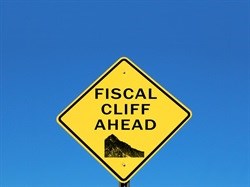
In the medium-term budget policy statement in October, Finance Minister Nhlanhla Nene indicated that the government was aware of a looming fiscal cliff. One of the ways in which the government aims to avert it is by increasing government revenue by about R44bn over the next three fiscal years to 2017-18.
Raising an additional R44bn in revenue will place a considerable additional burden on an already overburdened tax structure. It is not said whether these are nominal or real amounts.
Adjusted for inflation over the three fiscal years, the funding need increases considerably (assuming an inflation rate of 6% a year): R12.4bn (rather than R12bn) in 2015-16; R16.4bn (rather than R15bn) in 2016-17; and R19.7bn (rather than R17bn) in 2017-18. The total funding need then amounts to R48.5bn, rather than R44bn. However, in this analysis we used R44bn as the amount to be raised.
The implications are that new and additional taxes are required to raise the income necessary to meet the government's revenue needs. But how drastic are the required measures and what will be the possible effects? This analysis provides some insight into these questions. However, it remains clear that finding a one-size-fits-all answer will be a very difficult balancing act for the Treasury.
The government's main revenue sources at present are personal income tax, value-added tax (VAT) and company tax, and these are also likely to be the main sources for raising additional revenue. In this analysis we consider a combination of tax increases the government can use to reach its target of an additional R44bn.
A 10% elasticity is assumed for all revenue sources (except customs duties) to provide for a reduction in the tax base owing to the increased tax burden.
Examples of reductions are people working less in response to higher income tax, people driving less in response to increased fuel prices and people spending less in response to increased VAT rates. Finding the actual elasticities for each revenue source will in itself be a strenuous exercise, hopefully one for which the Treasury already has the answers.
First, two additional marginal tax brackets are suggested for personal income tax: 45% for taxable income above R1m a year and 50% for taxable income above R2m a year. Second, the VAT rate is increased by one percentage point to 15%. Third, the company tax rate is increased to 30%. Fourth, increases of 10% are proposed in excise duties and the fuel levy. Fifth, tax rate increases in dividend tax, estate duty and gift tax are assumed, which will result in additional income of R1bn. Lastly, customs duties are the exception. SA practically transfers all customs duty collections to its partner countries in the Southern African Customs Union (Sacu) - Botswana, Lesotho, Namibia and Swaziland. Increasing customs duties will therefore appear to have no benefit for SA and no increase is therefore suggested.
The room for raising extra income through increased taxation is very limited and the reining in of government expenditure is preferable to raising taxes. Changes in taxes can have serious implied and unintended consequences, including unforeseen elasticity adjustments (such as the possibility that tax increases could even lead to less revenue being collected after the adjustments) as well as socioeconomic effects, for example the regressive nature of VAT or fuel taxes.
Even more profound is the fact that an additional tax burden will negatively affect SA's growth performance, something SA cannot afford at this stage. Clearly Nene will have no easy task in deciding how to obtain the required additional revenue, and seems to be positioned between a rock and a hard place.
Given SA's own fiscal needs, it is clear that the subsidisation of SA's Sacu partners can no longer be afforded.

For more than two decades, I-Net Bridge has been one of South Africa’s preferred electronic providers of innovative solutions, data of the highest calibre, reliable platforms and excellent supporting systems. Our products include workstations, web applications and data feeds packaged with in-depth news and powerful analytical tools empowering clients to make meaningful decisions.
We pride ourselves on our wide variety of in-house skills, encompassing multiple platforms and applications. These skills enable us to not only function as a first class facility, but also design, implement and support all our client needs at a level that confirms I-Net Bridge a leader in its field.
Go to: http://www.inet.co.za